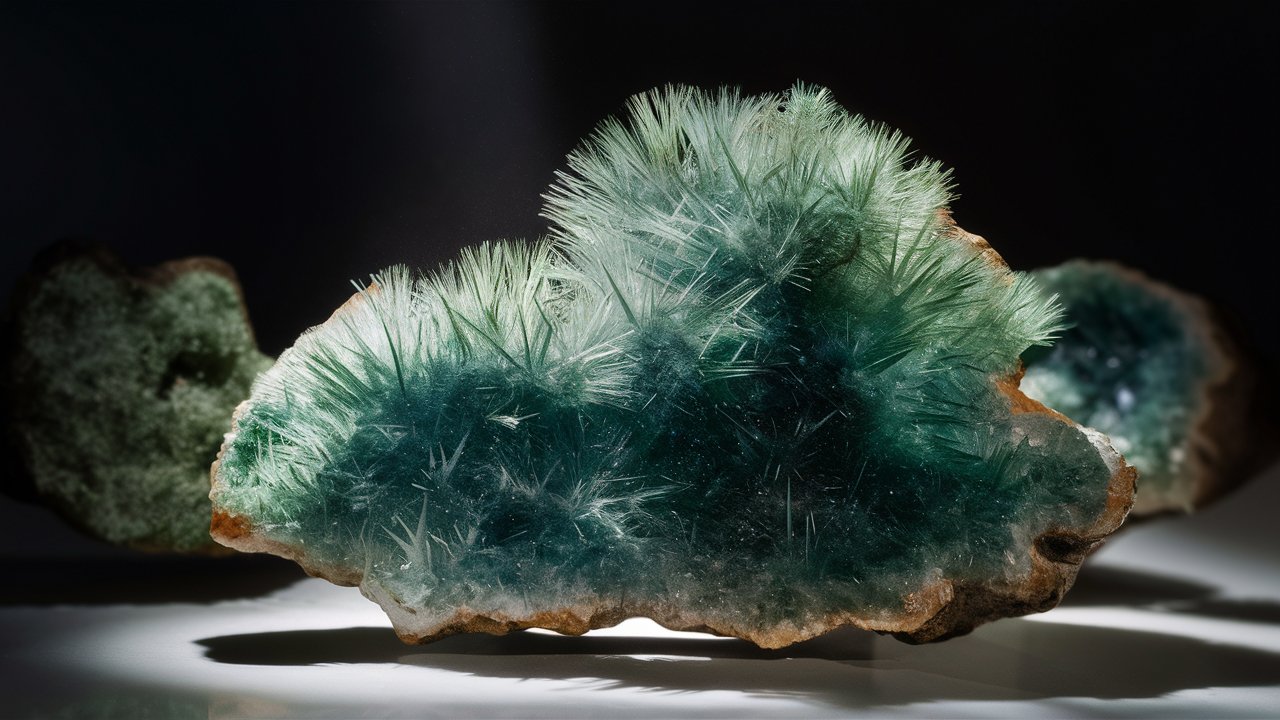
Akimotoite is a rare mineral that most people have never heard of. Named after the Japanese geophysicist Syun-iti Akimoto, this mineral has some fascinating properties. Akimotoite is primarily found in meteorites and the Earth's mantle, making it a subject of interest for scientists studying planetary formation. Its structure is similar to that of perovskite, another mineral found deep within the Earth. This mineral can withstand extreme pressures and temperatures, which is why it exists in such unique environments. Akimotoite plays a crucial role in understanding the Earth's interior and the processes that shape our planet. Let's dive into 15 intriguing facts about this extraordinary mineral!
What is Akimotoite?
Akimotoite is a rare mineral named after the Japanese geophysicist Shun-ichiro Akimoto. It is primarily found in meteorites and is known for its unique properties. Let's dive into some fascinating facts about this intriguing mineral.
Origin and Discovery
Understanding where and how Akimotoite was discovered can give us insight into its significance.
-
Akimotoite was first discovered in 1969 in a meteorite that fell in Australia. This discovery was significant because it provided clues about the conditions deep within the Earth and other planetary bodies.
-
Named after Shun-ichiro Akimoto, a renowned Japanese geophysicist, the mineral honors his contributions to high-pressure mineral physics. His work has been instrumental in understanding the Earth's interior.
-
Akimotoite is primarily found in meteorites, specifically in those that have undergone high-pressure conditions. This makes it a valuable mineral for studying the processes that occur in the deep Earth and other celestial bodies.
Chemical Composition and Structure
The unique chemical makeup and structure of Akimotoite set it apart from other minerals.
-
Akimotoite is a magnesium silicate with the chemical formula MgSiO3. This composition is similar to other high-pressure minerals found in the Earth's mantle.
-
It has a hexagonal crystal structure, which is unusual for magnesium silicates. This structure is stable only under high-pressure conditions, such as those found deep within the Earth or in meteorite impacts.
-
Akimotoite transforms into other minerals under different pressure and temperature conditions. For example, it can convert into bridgmanite, another high-pressure mineral, when subjected to extreme conditions.
Physical Properties
The physical characteristics of Akimotoite make it a subject of interest for scientists.
-
Akimotoite is typically colorless or light gray. Its appearance can vary depending on the specific conditions under which it formed.
-
It has a Mohs hardness of 6, making it relatively hard but not as hard as some other minerals like diamond or corundum.
-
Akimotoite has a high density, which is a result of its compact crystal structure. This density is one of the reasons it can only form under high-pressure conditions.
Geological Significance
Akimotoite plays a crucial role in our understanding of geological processes.
-
Akimotoite provides clues about the Earth's mantle. Its presence in meteorites suggests that similar high-pressure conditions exist deep within the Earth.
-
It helps scientists understand shock metamorphism, a process that occurs when meteorites impact planetary surfaces. Studying Akimotoite can reveal information about the history and intensity of these impacts.
-
Akimotoite is used to study subduction zones, where one tectonic plate moves under another. The mineral's properties can help scientists understand the conditions and processes occurring in these regions.
Research and Applications
Ongoing research into Akimotoite continues to uncover new information and potential applications.
-
Akimotoite is studied using advanced techniques like X-ray diffraction and electron microscopy. These methods allow scientists to analyze its structure and properties in detail.
-
It has potential applications in materials science. Understanding the properties of Akimotoite and similar high-pressure minerals can lead to the development of new materials with unique characteristics.
-
Research on Akimotoite contributes to planetary science. By studying this mineral, scientists can gain insights into the formation and evolution of planets, including Earth.
Akimotoite remains a fascinating subject of study, offering valuable insights into the conditions and processes that shape our planet and others in the solar system.
The Final Word on Akimotoite
Akimotoite, a rare mineral, holds a special place in geology. Found deep within the Earth's mantle, it offers clues about our planet's inner workings. Named after Japanese geophysicist Syun-iti Akimoto, this mineral forms under extreme pressure and temperature. Its discovery helps scientists understand seismic activity and the composition of the mantle.
Akimotoite's unique structure and properties make it a subject of ongoing research. It plays a crucial role in understanding plate tectonics and the Earth's evolution. Though not commonly encountered, its significance in scientific studies can't be overstated.
In essence, akimotoite is more than just a mineral. It's a window into the Earth's deep secrets, helping us piece together the puzzle of our planet's dynamic processes. Keep an eye on future discoveries, as they may reveal even more about this fascinating mineral.
Was this page helpful?
Our commitment to delivering trustworthy and engaging content is at the heart of what we do. Each fact on our site is contributed by real users like you, bringing a wealth of diverse insights and information. To ensure the highest standards of accuracy and reliability, our dedicated editors meticulously review each submission. This process guarantees that the facts we share are not only fascinating but also credible. Trust in our commitment to quality and authenticity as you explore and learn with us.


